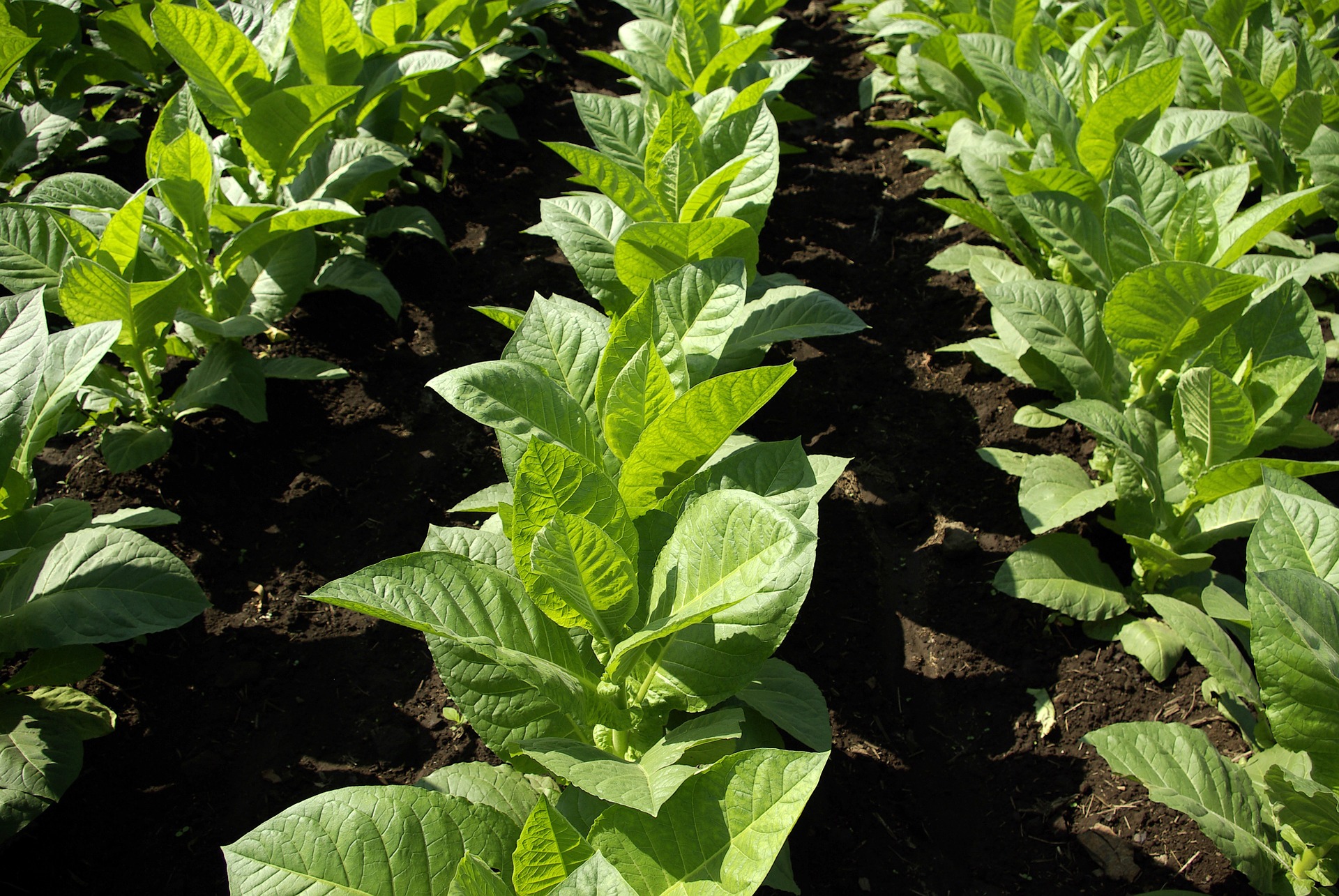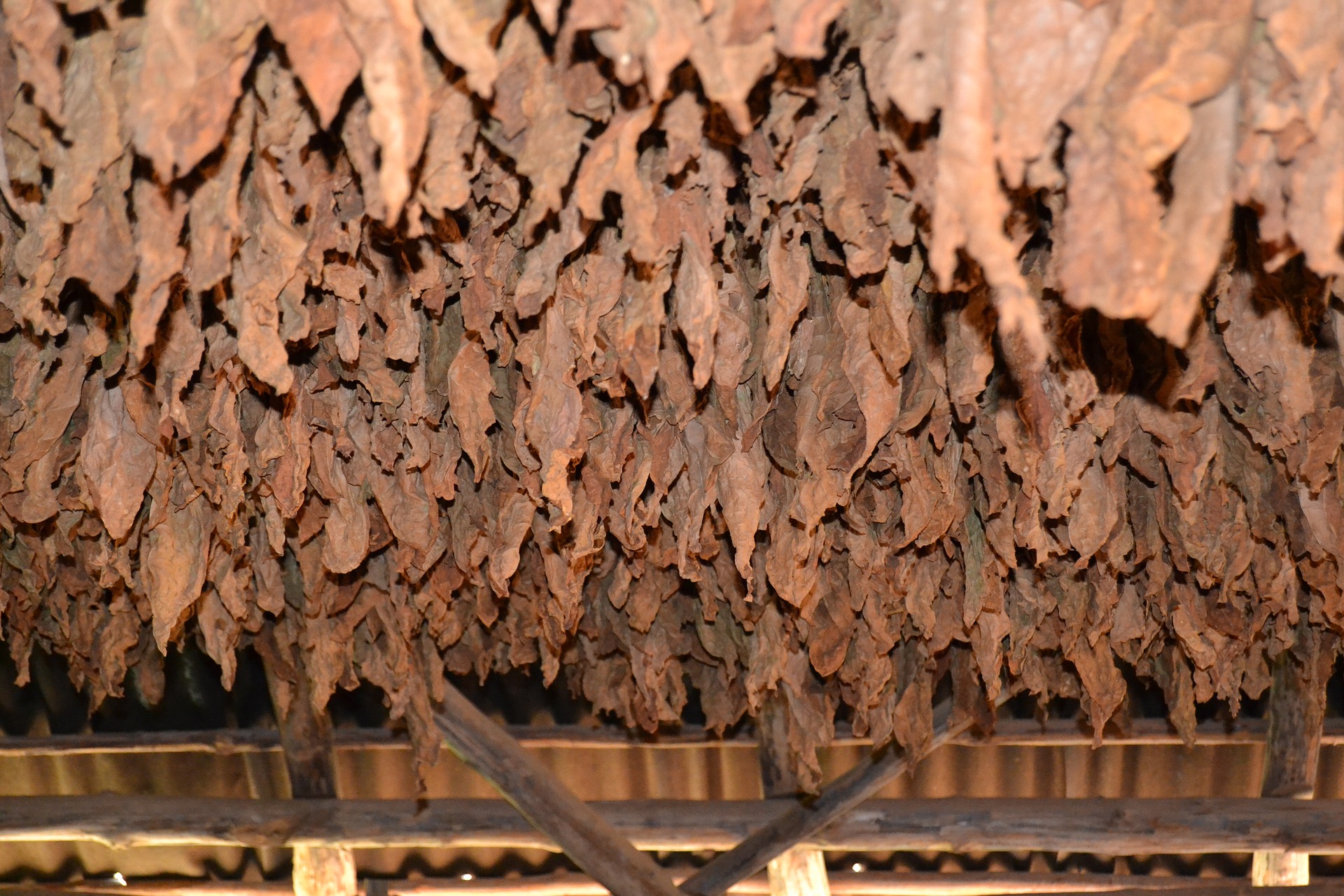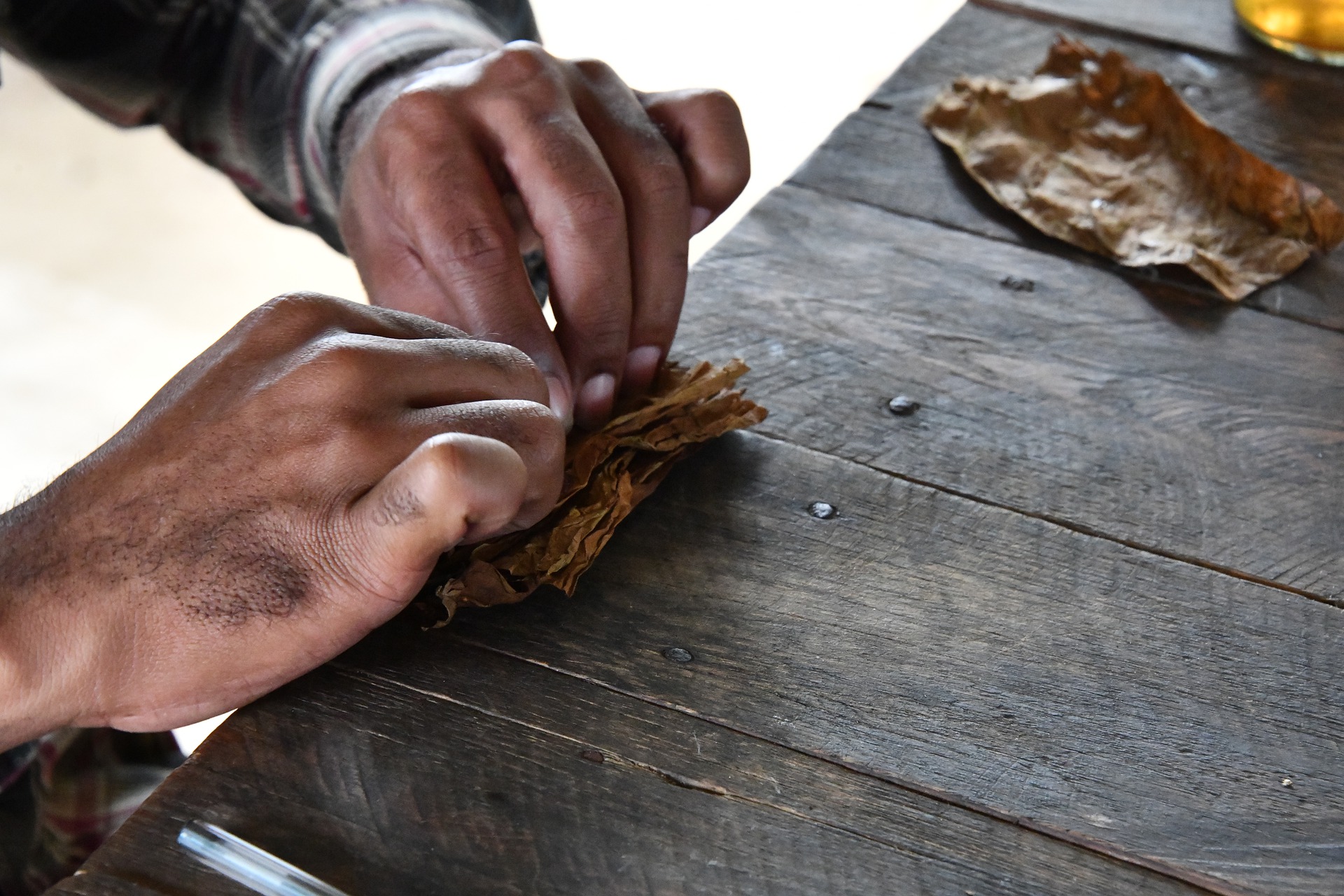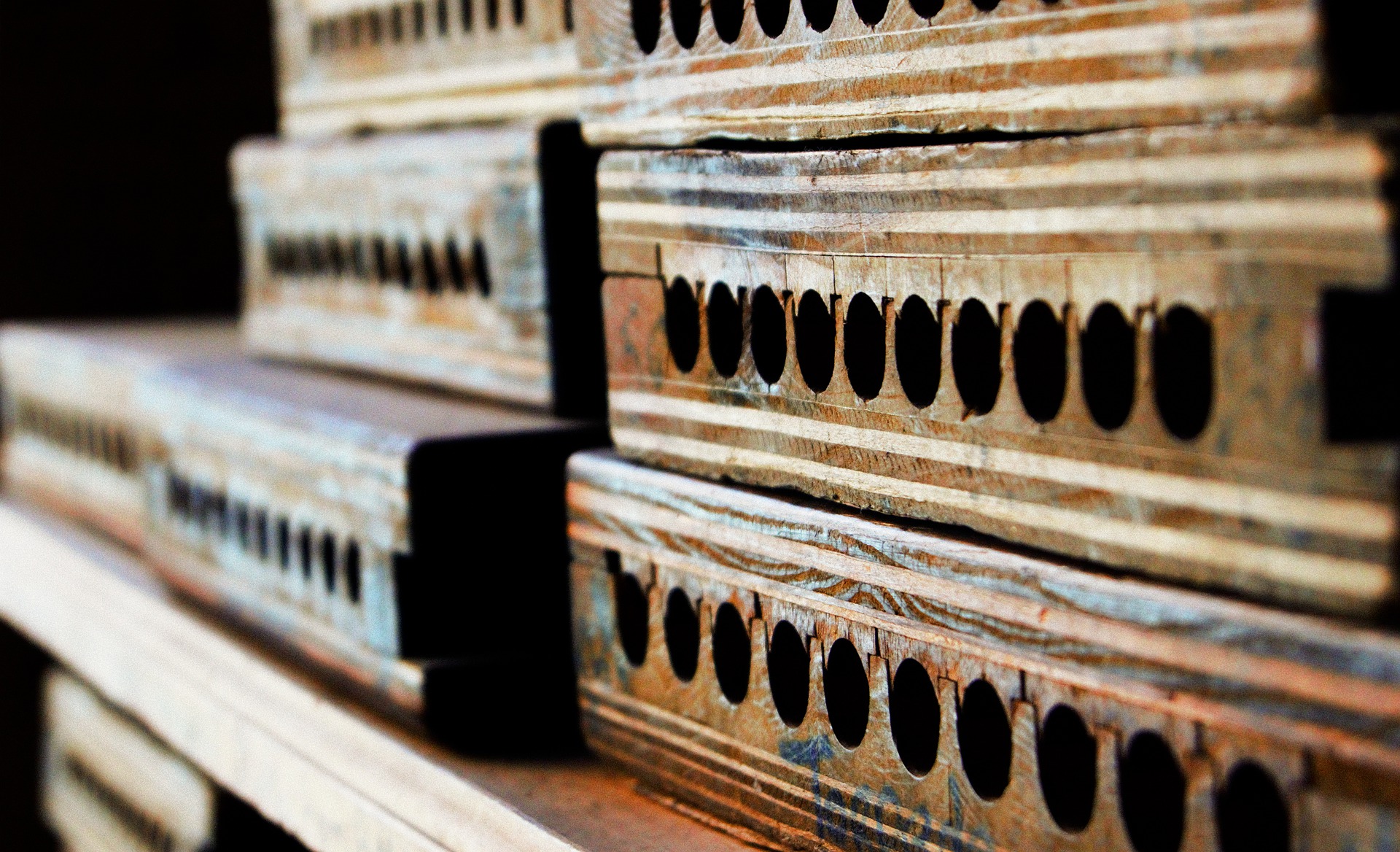Manufacturing of cigars
Tobacco Farming
There are few regions throughout the world that provide ideal conditions to cultivate tobacco. The foundation for every successful cultivation is an ideal soil and seeds. Seedtime starts mid-September, approximately two weeks later the first saplings are bedded-out. Plants used for wrappers take about 90 days to be ripe, whereas fillers take about 50 to 70 days.
To balance out temperature, humidity and sun exposure, gauze sunscreens are stretched across the tobacco fields.
The growth of the tobacco leaves is checked constantly. To get the desired quality, the leaves have to be harvested to the day.
A differentiation can be made between three types of tobacco leaves or Primings:

the lower leaves are called "Volado" – the mildest type of leaf. The middle leaves are called "Seco" – known for their strong flavour and the top leaves, called "Ligero" are very refined in taste and texture.
Tobacco Harvest
Harvest begins in January and ends come April. Usually two to four leaves of each plant are picked during one round of harvesting.
Since a tobcco plant has about 16 to 18 leaves, there are up to six harvests in one season.
All in all, it takes about seven months from bedding-out the saplings to the last harvest.
The Drying
After picking the leaves are sorted by size and structure, bound together in pairs and hung over poles in an oast house. During the drying time (which takes a couple of weeks) the moisture content of the leaves decreases and due to oxidation they turn from green to a brownish colour. The time it takes to dry tobacco leaves varies, depending on the use later on in the production process (wrappers, fillers or shortfillers).
The First Fermentation
After the leaves are sorted by size they are further divided by colour and stacked in so called burros before the beginning of the first fermentation, which is a procedure that resembles composting. Inside those stacks warmth is produced, the temperature has to be checked meticulously. The time needed for drying and fermentation varies depending on the type of leaf and can take from 25 up to 60 days. The first fermentation brings about a decrease of the concentration of resin and gives the leaves an evenly distributed colour.

The Second Fermentation
After the leaves are sorted by size, colour and structure again, they are moistened with a mixture of water and tobacco juice. A second fermentation begins in which acidity, tar and nicotine content are degraded while at the same time the flavour of the tobacco spreads through the leaves. Covered in palm or banana leaves they are then distributed to the different cigar manufactories.
The Third Fermentation
In the factory, the leaves are sorted by wrappers, long fillers and fillers. Wrappers and long fillers are either processed mechanically or manually. The following third fermentation, preceding the blending of the tobacco can take up to 10 years with Premium tobaccos. During that time the leaves are stored in wooden barrels and, undergoing ventilation, taken care of meticulously.
The Blending
The art of blending lies in combining leaves of different plantations in such a way that the aroma and flavour turn out exactly the same each year and the quality can be ensured. Only the specific mixtured give a cigar its trademark aroma. The recipes are the most closely guarded secrets of the cigar manufacturies.
Rolling a Cigar
Two to Four tobacco leaves are, depending on their format, manually folded around each other in a conical form. This way ventilation canals inside the cigar are formed, ensuring the even draw of the cigar.

Next, this filler is enfolded in one half of the binder, larger formats use two halves. The in this way formed bunch is then pressed into a wooden frame.
The cigarmaker now takes out one of the moistened wrappers, unfolds it on his cutting board, stretches it and cuts it to size. The bunch is now gently placed onto the wrapper in an angular manner and wrapped carefully.
In the next step a round piece is cut out of the rest of the wrapper-leaf and placed onto the head of the cigar with a natural adhesive. Some cigars form the head by twisting the ends of the wrapper together.
Then the cigarmaker uses his blade to stroke over the wrapper and rolling the cigar on his table to give it shine. The last step is shortening the cigar to its proper length.
Rest Period
The handmade cigars are bound together into a batch of 50 pieces. These batches are placed in a special smokebox to prevent possible damage by vermin.
Afterwards they are left in cedarwood cabinets for up to eight weeks. In this step, a part of the moisture the cigars have taken in during the steps before, the fermentation ends and the flavours of the different types of tobacco is blended together.
Quality Inspection
After the rest period a sample is removed from every batch to undergo a quality inspection, concerning length, diameter, weight, workmanship and appearance.

Test smokers check the cigar regarding flavour, burn-off and draw. The next step sees the cigars first sorted by main colours and then sorted by different hues of the same colour, so each box can be filled with the same colour cigar.
Boxing and Quality Seal
The cigars, sorted by colours, now are receive a band, which is glued to the cigar manually with a natural adhesive.
The boxes used to store cigars in are usually made from cedarwood, since it supports the ripening process and keeps the cigar from drying out.
After the boxes are decorated with artistic embellishments (initials of the brand and pictures), after which the cigars are placed inside the box, covered with a thin sheet of cedarwood, then the box is closed and sealed off with quality seals of the different cigar manufacturers.
